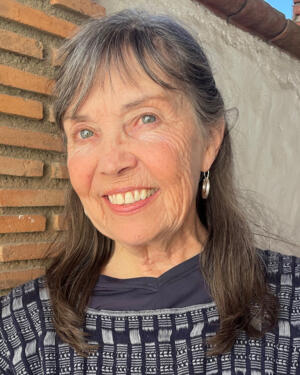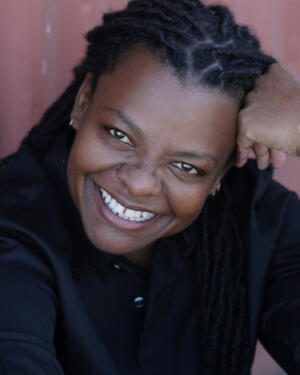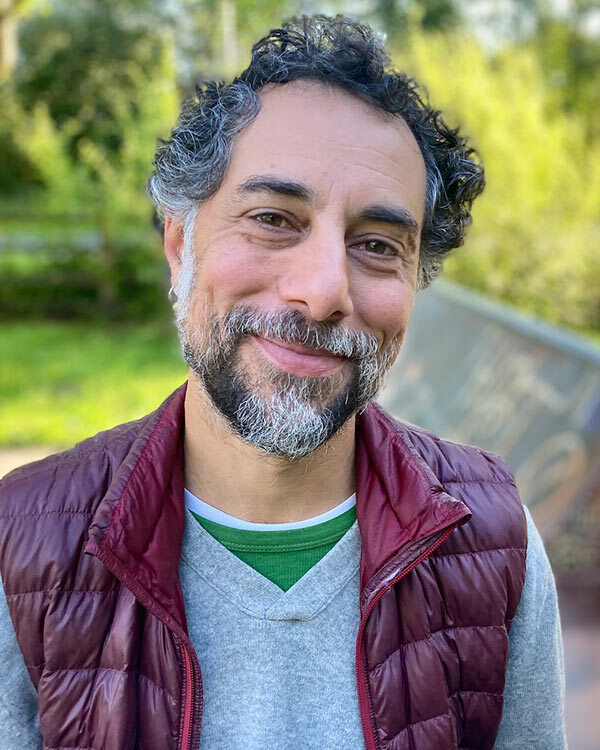While we all know that we are mortal and inevitably will die, it can be hard to truly accept this most intimate impermanence. Death can be frightening, confusing, or surprising—even as we know that it happens to everyone. Coming into a mature relationship with the truth of death is at the heart of the Dharma, and like lovingkindness, equanimity, and mindfulness itself, it is a practice. Mindfulness of death, or maraṇasati, is central to the cultivation of insight, and along with being one of the most ancient, is also among the most liberating of all practices.
Mindfulness of death is woven throughout the Buddhist teachings. It is the heart of the teaching that all things share the characteristic of impermanence (anicca). Death is a link in the chain of Dependent Origination, the natural result of the process of grasping and suffering described as an endlessly revolving cycle. And most centrally for our practice of meditation, mindfulness of death is the concluding practice in the “Body” section of the Foundations of Mindfulness (Satipaṭṭhāna Sutta, Middle-length Discourses 10).
Mindfulness of the body is the heart of our practice. The Satipaṭṭhāna Sutta begins with bringing present-moment sensory awareness to the body in meditation postures, the various activities that fill our days, and the experience of breathing. Building on this foundation of embodied awareness, the Satipaṭṭhāna Sutta then continues into three progressive contemplations on the nature of the physical body.
The 32 Parts of the Body
Beginning with anatomy, the meditation on the “thirty-two parts of the body” trains us to perceive the body as a collection of substances that when imagined on their own can inspire disgust, including many aspects of flesh, organs, and bodily fluids. This is traditionally the first practice given to novice monastics, often teenagers, and can help to process the energies of lust and grasping for bodily experience so common at that age (or any). An important inquiry is set in motion in this practice as we become aware of our own bodies as physical processes, and start to wear down the sense of the body as our “self” or possession.
The Four Elements
The second body contemplation is the meditation on the four elements: earth, water, fire, and wind. This contemplation brings our attention to how our bodies manifest these four fundamental natural qualities, focusing on the characteristics of each element rather than the four literal substances. “Earth” is felt as solidity, texture, and pressure. “Water” is perceived as liquidity as well as cohesion—the quality that holds matter together. “Fire” is the characteristic of temperature, cold to hot. And “wind” is the perceivable quality of movement and change. (Sometimes a fifth element, space, is added to the practice, in which we perceive size and the distance between things.) The contemplation for all of these is that our bodies are made up of the same qualities as everything around us in the natural world. This teaches us that we are not separate, and even not substantially different, from the world around us.
The Corpse Contemplations
With these two meditations as the foundation, the Satipaṭṭhāna Sutta has prepared the ground for the existential reflection they imply: that our bodies are part of nature and therefore mortal, and will inevitably decay like everything we observe around us. Called the nine “corpse contemplations,” this section includes vivid descriptions of how a body decays from its initial state after death to the full return to bones and dust that completes the process.
Bodies in decay, generally in charnel grounds or other sites for disposing of the dead, would have been visible to practitioners in the Buddha’s time, and still are in some places in the world. Practitioners in many spiritual traditions have meditated in cemeteries and charnel grounds precisely for the powerful energy that is there, and the chance to confront the deep fear and confusion around death that we naturally carry. In a famous talk, “In the Dead of Night,” Ajahn Chah describes meditating in a charnel ground as a way to try to confront his fear.
In the Insight Meditation tradition we sometimes use photographs of a corpse in these various states as a support for the meditation, but the practice can also be done simply as a visualization, reading the description in the text and holding the image in your mind. After each description, the meditator is encouraged to connect the image with their own body, reminding us that our own bodies will go through this process. The nine images are:
Suppose a mendicant were to see a corpse discarded in a charnel ground. And it had been dead for one, two, or three days, bloated, livid, and festering. They’d compare it with their own body: ‘This body is also of that same nature, that same kind, and cannot go beyond that.’ …
Furthermore, suppose they were to see a corpse discarded in a charnel ground being devoured by crows, hawks, vultures, herons, dogs, tigers, leopards, jackals, and many kinds of little creatures. …
Furthermore, suppose they were to see a corpse discarded in a charnel ground, a skeleton with flesh and blood, held together by sinews …
A skeleton without flesh but smeared with blood, and held together by sinews …
A skeleton rid of flesh and blood, held together by sinews …
Bones rid of sinews scattered in every direction. Here a hand-bone, there a foot-bone, here an ankle bone, there a shin-bone, here a thigh-bone, there a hip-bone, here a rib-bone, there a back-bone, here an arm-bone, there a neck-bone, here a jaw-bone, there a tooth, here the skull. …
White bones, the color of shells …
Decrepit bones, heaped in a pile …
Bones rotted and crumbled to powder.
(Satipaṭṭhāna Sutta, Middle-length Discourses 10)
This meditation, known as maraṇasati, is intended to wake us up to the reality of embodied life, and challenge the grasping to youth, health, and life itself that is the source of so much suffering. The three body contemplations—anatomy, the elements, and mortality—are “deconstruction” practices in which we challenge our habits about who we are and the nature of the bodies we carry. Because of this, they can be destabilizing, and are best practiced under the guidance of a teacher, and not when one is in psychological or emotional distress. These can be thought of as purification practices, where we become more aware of our fears and ego structures by challenging the assumptions that support them.
Like all the practices in the Satipaṭṭhāna, each of these intense images and the contemplation that our own bodies are not exempt from this fate is followed by a “refrain” that grounds the practice in the core intent of all mindfulness: to understand impermanence and to let go of grasping.
And so they meditate observing an aspect of the body internally, externally, and both internally and externally. They meditate observing the body as liable to originate, as liable to vanish, and as liable to both originate and vanish. Or mindfulness is established that the body exists, to the extent necessary for knowledge and mindfulness. They meditate independent, not grasping at anything in the world. (MN 10)
The heartwood of the Dhamma is in the profound non-grasping that leads to liberation from suffering. Reflecting on the mortality of our bodies through visualizing the process of decay can be a shocking wake up call as well as a reminder that we are not separate from nature, and never will be. Knowing that all living beings fear death and cling to life inspires compassion and tolerance as we see this deep unconscious fear motivating people’s actions all around us. The heart of maraṇasati, however, is personal, turning us toward the uncomfortable truth of death that when unexamined creates so much suffering and fear, and offering a path out of that fear.
Cultivating Urgency
Mindfulness of death is a powerful way to shift our complacency about the passing of time, and the tendency to think that we will devote ourselves to practice in the future. In a series of discourses on Mindfulness of Death (AN 6.19 and 6.20, also at AN 8.73 and 8.74), the Buddha encourages monastics to reflect on the unknown time of one’s death as a way to increase the sense of urgency in practice, and to not waste one’s time. This is the source of the common instruction to “practice as if your hair is on fire.” The quality of spiritual urgency (saṁvega) is considered powerful and necessary in practice precisely because we do not know how long we have until our death.
Practicing maraṇasati can be as simple as reminding ourself at the start of the day that we do not know how long we will live, and setting an intention to act and speak with lovingkindness, compassion, and mindfulness. You can experiment with the traditional images by reading the descriptions and imagining them one at a time, or by finding images to look at directly. It can be helpful to do these practices when you feel somewhat resilient and clear in your heart, and not when there’s substantial distress or grief. The heart of the practice is to awaken to the truth, with joy and freedom as the result, not to deepen states of despair or grief.
Through reflection on death we find urgency for practice, and commitment to the Dhamma. And through coming to mindful presence with the truth of death, the struggle and drama of our life and this moment in the world is seen with perspective. Everything passes, the Buddha said, and the one who knows this in their heart, knows peace.
Guided Meditations: Maraṇasati
Talks on Maraṇasati Practice
Upcoming Programs
Join us for an upcoming program exploring the transformative practice of Maraṇasati.
Retreat | On-Land | Hybrid
Saturday, October 26 | 10:00 AM - 1:00 PM
Discovering What Death Can Teach Us About Living Fully
Death is the secret teacher hiding in plain sight. Death helps us discover what matters most, and we don’t have to wait until the end of our lives to realize the wisdom that death has to offer. Weaving together pragmatic tools, real life stories, and ancient wisdom, Frank and Vinny will help us discover how an awareness of death can be a valuable companion on the road to living well and forging a rich, meaningful life.
Retreat | On-Land
October 27 - November 2, 2024 | Sunday - Saturday | 6 nights
Befriending Mortality: Living An Awakened Life Through Mindfulness of Death
18 CE Credits.
Spaces Available. We all “know” we will die, yet we tend to ignore it and put our collective heads in the sand. Rather than running away from our inevitable mortality, we can harness its power to stay aligned with our deepest values and to live and love more fully. Fully embracing life’s impermanence can engender a deep freedom and letting go. Through mindfulness of death (maraṇasati), we become more present for this miraculous, passing show called life with gladness and gratitude.
Retreat | On-Land | Hybrid
Saturday, November 16 | 1:30 PM - 4:30 PM
Mindfulness of Death: The Profound and Liberating Practice of Maranasati
3 CE Credits. We all die. Death is as natural as birth. Ignoring the power of this supreme contemplation is like discarding a precious jewel. Recognizing our finite time enriches our life, helping us to live more fully, lovingly, and mindfully. These teachings also bring peace—a gift to ourselves and our loved ones. Join us in exploring the profound, liberating teachings of mindfulness of death, and unlock the potential to embrace the fleeting miracle that is life.

Nikki Mirghafori
Training | Online Non-Residential | Dharma Institute
January 25 - December 13, 2025 | 12 Sessions, plus Graduation in January 2026
A Year to Live
Join the Wait List; A few spots many still be available. In this year-long program, based on the book A Year to Live by Stephen Levine, we will focus on waking up and living life more fully through the exploration of death as spiritual practice. The Buddha recommended that we contemplate the inevitability of our death in order to help us awaken to the fragile, fleeting, and precious nature of our lives. All are welcome as we join in community for this year-long practice in forgiveness, gratitude, and letting go.






